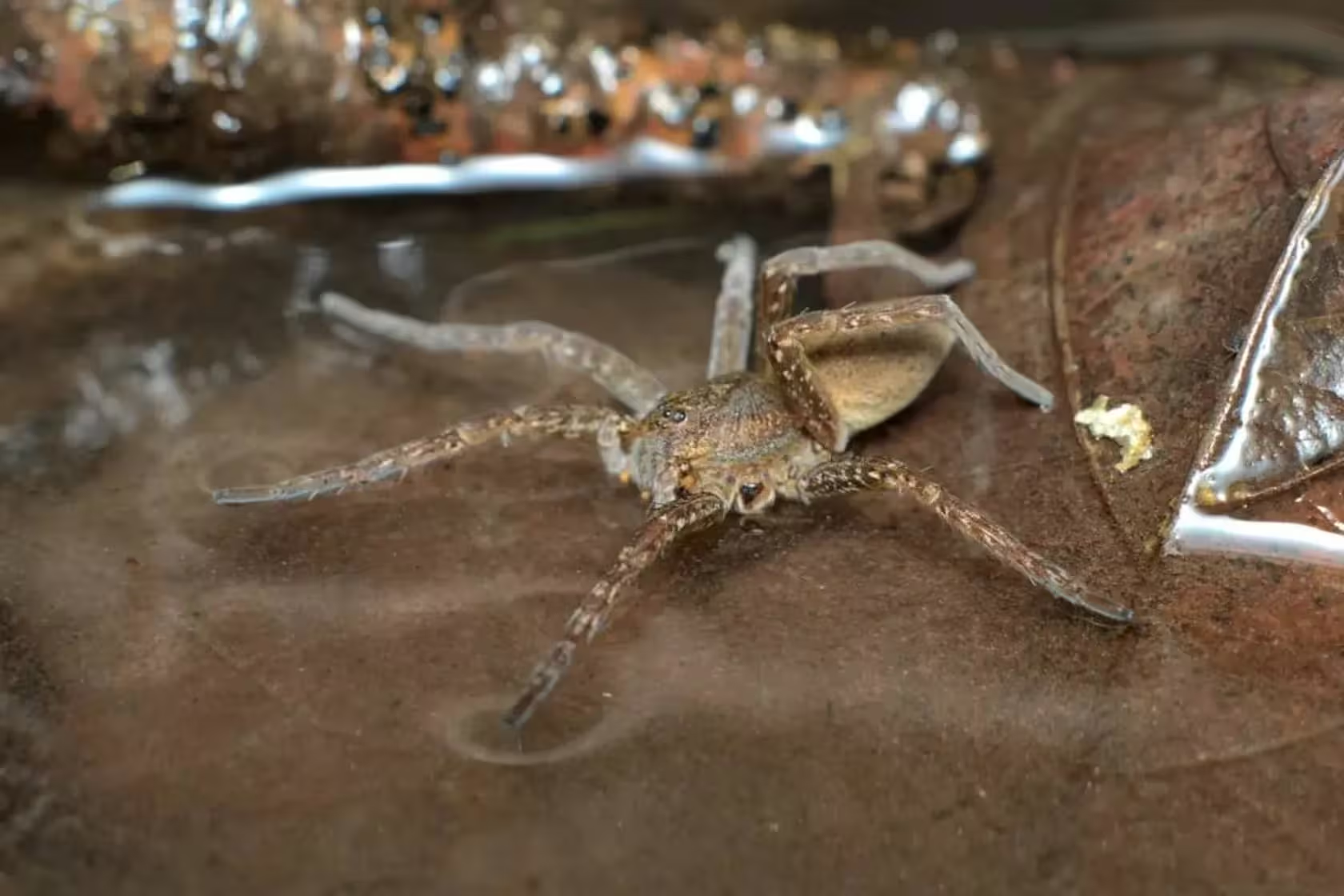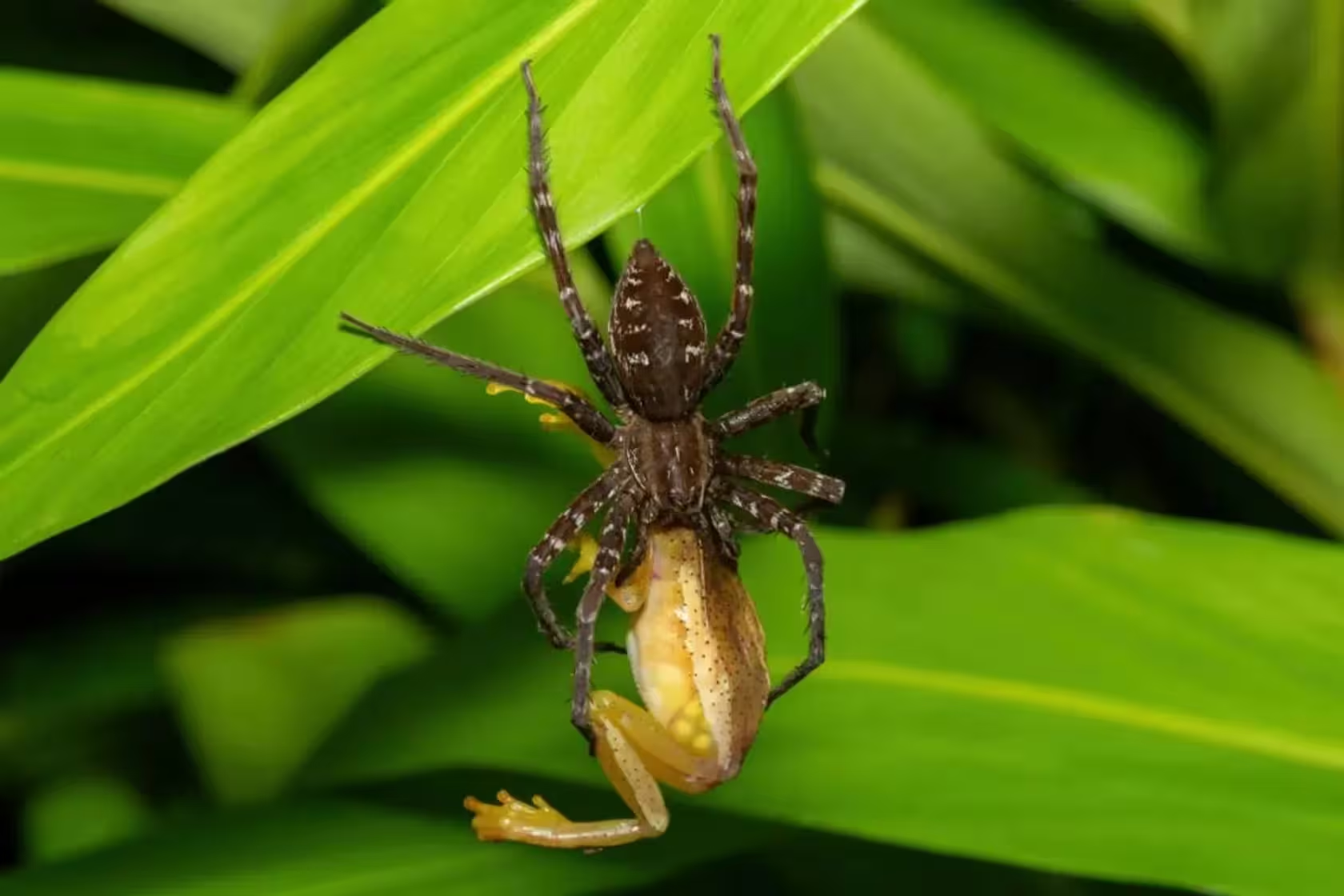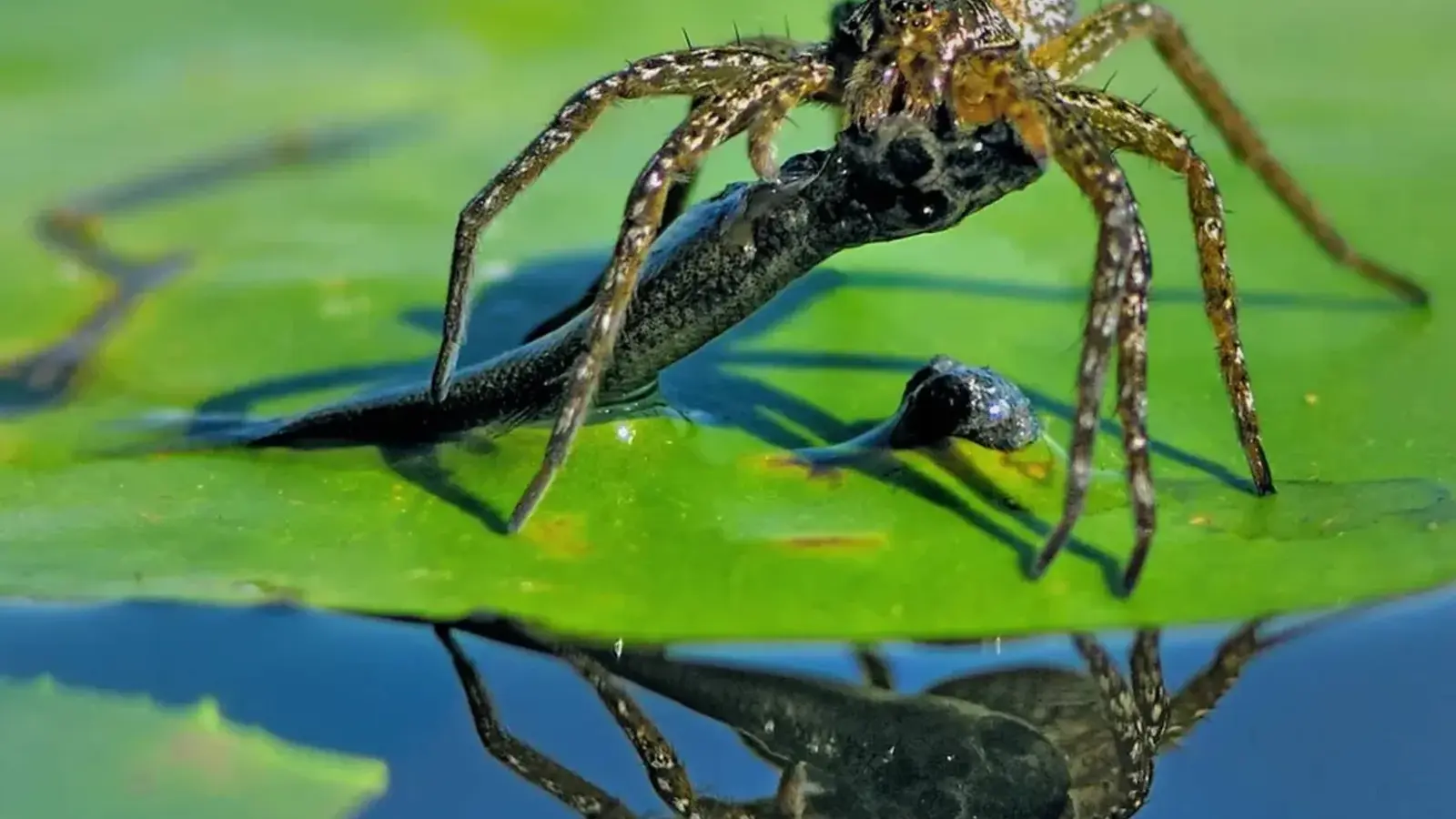5 Minutes
Fishing spiders (genus Dolomedes and related taxa) are semi-aquatic arachnids capable of hunting surprisingly large and energetic prey. Some species can subdue animals up to five times their own body mass, using surface tension, sensitive leg hairs, and rapid strikes. These spiders feed not only on insects but also on small fish, tadpoles, frogs, and even freshwater crustaceans.
Hunting strategies and sensory adaptations
Fishing spiders employ a range of specialized behaviors to locate and capture aquatic prey. Many species sit at the water’s edge or rest on emergent vegetation, extending their legs to detect ripples and vibrations produced by swimming fish. The spiders’ legs are covered with fine sensory hairs (trichobothria and slit sensilla) that translate water surface disturbances into neural signals, allowing the spider to pinpoint a prey item without visual contact. Some Dolomedes species also move across the water’s surface using hydrophobic hairs that trap air and reduce wetting, enabling them to skate or pause on the surface while testing for prey.

How they capture fish
Once a target is detected, a fishing spider will lunge, seize, and often inject venom to subdue the prey. In many cases the spider hauls the immobilized fish or amphibian ashore to eat it in safety. Researchers have documented hunting at night in some species—Dolomedes dondalei is known for nocturnal foraging—relying heavily on tactile rather than visual cues.
Fishing spiders’ diets are constrained by body size and strength: while a single capture of a fish several times larger than the spider is impressive, such events may require substantial effort and are therefore energetically justified by the high-calorie payoff.
Distribution, frequency, and ecological context
A 2014 comprehensive review found that fish-hunting is more widespread among spiders than previously thought. Species from at least five families (and later assessments suggesting up to eight families) have been observed taking small fish across all continents except Antarctica. However, complete fish predation appears localized and opportunistic—most commonly occurring where spiders have easy access to small fish in shallow pools, artificial ponds, or aquaria. Tropical regions between roughly 40°N and 40°S show higher frequencies of these interactions, likely reflecting greater aquatic prey diversity and abundance.
The 2014 study emphasized that previous research focused largely on a few genera such as Dolomedes and Nilus, underestimating the taxonomic breadth of piscivory in spiders. The authors concluded that further field research is needed to quantify how often fish contribute to the spiders’ diets and to understand the ecological significance of this behavior.

Scientific background and technological relevance
Fishing spiders illustrate a convergence of biomechanics, sensory ecology, and predation strategy. Their adhesion to the water surface—mediated by body hair structure and hydrophobicity—has inspired research in biomimetics and small aquatic robots. Some engineering groups study spider leg microstructures to design novel surface-walking microrobots and biologically inspired sensors capable of detecting minute water disturbances. Additionally, the spiders’ ability to combine tactile sensing with rapid predatory strikes provides a model for autonomous detection-and-capture systems in soft robotics.
Implications for conservation and human encounters
Although fishing spiders can be intimidating to encounters with anglers or pond owners, they are not dangerous to humans and play a role as mid-level predators controlling aquatic and terrestrial invertebrate populations. Their presence indicates healthy riparian habitats where water quality and structural complexity support both spiders and their prey. If you fish near ponds or shallow streams, be aware that a patient spider on the bank or on floating vegetation may also be watching—and may steal your catch.
Expert Insight
"Fishing spiders challenge our assumptions about what spiders can eat and how they sense their world," says Dr. Laura Mendel, an arachnologist specializing in predator–prey biomechanics. "Their reliance on water-surface sensing and the energetic trade-offs involved in capturing large prey make them excellent subjects for studying behavioral ecology and for informing robotics that must operate at fluid interfaces."
Conclusion
Fishing spiders are remarkable examples of semi-aquatic predation among arachnids. Their diverse hunting strategies, global distribution, and relevance to biomimetic design make them a valuable subject for continued field studies and interdisciplinary research. Whether viewed as an ecological curiosity or as a template for engineering, these spiders demonstrate how evolution can produce effective predators that bridge land and water.


Leave a Comment